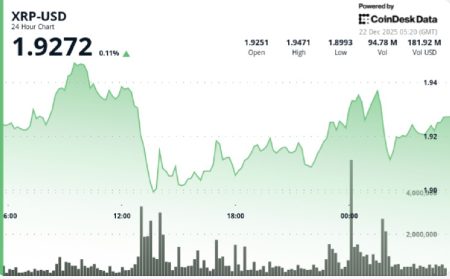The Bitcoin Fear and Greed Index, a widely used sentiment analysis tool, gauges the prevailing emotional state of Bitcoin traders and investors, ranging from extreme fear (0) to extreme greed (100). This index, while popular, attracts skepticism regarding its practical utility in investment decision-making. This analysis delves into the index’s composition, evaluates its effectiveness through backtesting a contrarian trading strategy, and discusses its potential benefits and limitations.
The Fear and Greed Index synthesizes data from various sources to provide a comprehensive snapshot of market sentiment. These sources include price volatility, which tends to fuel fear during market downturns; momentum and volume, where increased buying often signifies greed; social media sentiment, reflecting collective optimism or pessimism; Bitcoin dominance compared to altcoins, which can indicate cautious behavior; and Google Trends data on Bitcoin-related searches, correlating with public interest. The index presents this data visually, with lower values (red zones) indicating fear and higher values (green zones) representing greed. The index’s design implicitly suggests a contrarian approach: buying when fear is prevalent and selling when greed dominates.
To empirically assess the index’s value, a backtest was conducted using data from February 2018, the index’s inception date. The strategy involved allocating 1% of capital to Bitcoin when the index fell to 20 or below (indicating extreme fear) and selling 1% of Bitcoin holdings when the index reached 80 or above (signifying extreme greed). This straightforward strategy aimed to capitalize on market extremes by buying low and selling high.
The results of the backtest revealed that the contrarian strategy based on the Fear and Greed Index outperformed a simple buy-and-hold approach. While the buy-and-hold strategy yielded a 1,046% return on investment (ROI) over the tested period, the Fear and Greed strategy achieved a higher ROI of 1,145%. Although the difference isn’t vast, it demonstrates the potential for enhanced returns by strategically scaling in and out of Bitcoin based on prevailing market sentiment. This outperformance suggests that systematically exploiting periods of extreme fear and greed can be more profitable than passively holding Bitcoin.
The Fear and Greed Index’s effectiveness stems from its foundation in behavioral economics and the psychology of market participants. Markets are prone to overreactions in both directions, driven by fear during downturns and greed during uptrends. The contrarian strategy capitalizes on these irrationalities by buying when others are fearful and selling when others are greedy. This approach allows investors to mitigate risks by accumulating Bitcoin during periods of undervaluation (driven by fear) and realizing profits when the asset is potentially overvalued (driven by greed). The gradual scaling in and out over market cycles, as employed in the backtested strategy, contributes to this risk management and profit maximization.
However, it is crucial to acknowledge the limitations of relying solely on the Fear and Greed Index. The backtested strategy’s success hinged on disciplined trade management, specifically the gradual scaling in and out of positions. Attempting to time the market aggressively based solely on the index could lead to suboptimal results. Market sentiment can remain irrational for extended periods, and trying to perfectly capture market bottoms and tops is highly challenging. Furthermore, the backtest didn’t account for transaction fees or taxes, which would impact real-world returns. Therefore, the Fear and Greed Index should be viewed as one tool among many, rather than a standalone investment strategy.
In conclusion, the Bitcoin Fear and Greed Index, while not a foolproof predictive tool, offers valuable insights into market sentiment and can enhance investment decision-making. Used judiciously in conjunction with other analytical tools like on-chain data and macroeconomic indicators, the index can help investors identify opportune moments to enter and exit positions. The backtested strategy demonstrates that a contrarian approach informed by the index can potentially outperform a passive buy-and-hold strategy. However, it’s essential to maintain a long-term perspective, practice disciplined trade management, and avoid relying solely on the index for investment decisions. The index should be integrated into a holistic investment framework that considers various factors, promoting informed and strategic decision-making. It’s a useful tool for understanding market psychology, but it’s crucial to avoid emotional decision-making driven solely by the index’s readings.














